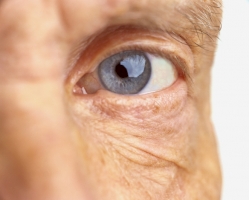Over 30 million people in the United States live with diabetes, and approximately 7.7 million people have diabetic retinopathy, making it the most common cause of vision loss in working-aged adults. The prevalence of diabetic retinopathy has increased significantly over the past 20 years, due to the rise in the number of people diagnosed with diabetes.
How does diabetes affect the retina?
The retina is the light-sensing component located in the back of the eye. It is composed of blood vessels, nerve cells (neurons), and specialized cells called photoreceptors that are involved in directly sensing light. The ability of the retina to sense light requires energy, which is dependent on the oxygen supplied by blood circulating through blood vessels.
In diabetes, elevated blood sugar levels damage the blood vessels of the retina. These damaged blood vessels leak fluid, bleed, and do not provide adequate oxygen to the retina, leading to retinal ischemia. As a result, retinal cells begin to die and the retina is unable to function properly. In addition, diabetes also damages the neurons of the retina directly. Together, these effects cause diabetic retinopathy.
Vision loss associated with diabetic retinopathy may initially affect central vision due to a condition called diabetic macular edema. This swelling of the macula, a portion of the retina responsible for sharp, central vision, can lead to blurry vision and distortion of images.
Advanced diabetic retinopathy is characterized by the formation of irregular blood vessels that can bleed inside the eye, causing a rapid loss of vision. This results in a sudden, curtain-like vision loss as blood fills up the inside of the eye. Further worsening of advanced diabetic retinopathy can lead to retinal detachment, which requires urgent surgical intervention and can result in permanent, irreversible vision loss if not promptly treated.
What can I do to prevent diabetic retinopathy?
The American Diabetes Association recommends that most people with diabetes keep their A1c level (a measure of average blood sugar levels over the previous two to three months) below 7% to prevent the risk of complications. As blood glucose directly damages retinal blood vessels, there is strong epidemiological evidence that blood sugar control translates to decreased incidence and severity of diabetic retinopathy.
In order to reduce the car






